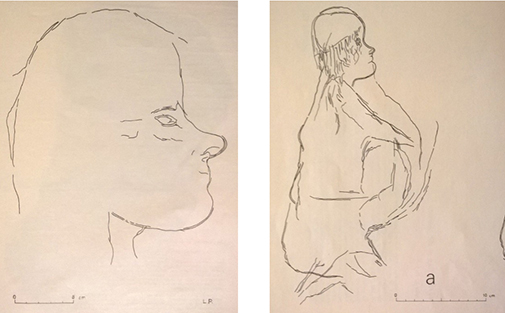On the Attribution of Palaeolithic Artworks
The Case of La Marche (Lussac-les-Châteaux, Vienne)

Examples from Pales, 1976
Is it possible to identify the authors of Upper Palaeolithic art?
The new paper, co-authored by York PhD Simone Chisena and his colleague Christophe Delage appears in the latest issue of Open Archaeology discusses this issue and is found here (Open Access).
Summary: The answer is, emphatically, yes. In this paper, we have showed how assigning works of art from the Upper Palaeolithic to their authors is indeed possible and advisable too: the knowledge of how many "hands" are at work on a site with art and their level of skill can cast further light into the social organization of prehistoric communities, in particular on the transmission of non-utilitarian skills. We have applied the first phase of a three-stages method (consisting of macroscopic observation, microscopic analysis and experimental protocol) to the remarkable collection of human-themed engravings from La Marche (Lussac-les-Châteaux, Vienne): the results have shown a large number of individuals working on this complex, with varying levels of skill and visible influences on one another. This has prompted us to speak of La Marche as an "art workshop" of the Upper Palaeolithic, where art was not only produced but also taught to the younger generations.